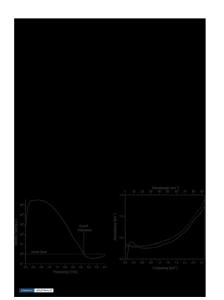Smooth surface of Bi-Sr-Ca-Cu-O thin films on the Y 3 Al 5 O 12 (YAG) substrate
- PDF / 1,396,106 Bytes
- 8 Pages / 576 x 792 pts Page_size
- 36 Downloads / 331 Views
We prepared the superconducting B i - S r - C a - C u - 0 thin films on Y3AI5O12 (YAG) single crystal substrates by metal-organic chemical vapor deposition (MOCVD). This film of 50 nm thickness on a YAG substrate showed c-axis orientation clearly, and the zero-resistivity (7>zero) was achieved at 66 K. The film has the advantageous property of surface smoothness compared with the film fabricated on MgO and SrTiO3 single-crystal substrates. The surface property of the YAG substrate seems to influence the film quality.
I. INTRODUCTION
II. EXPERIMENTAL
The surface morphology of the superconducting thin films has been studied. To control the surface, and especially to control the surface roughness, is one very important objective from the viewpoint of application to the superconducting devices. We need the surface roughness to be less than a few angstroms in the range of the atomic scale. However, it is very hard to fabricate a superconducting thin film that has a very smooth surface. The surface morphology strongly depends on the growth mechanism of B i - S r - C a - C u - 0 thin films. It has been reported that the spiral growth mechanism related to the growth of Y - B a - C u - 0 thin films1'2 and the initial stage of Y - B a - C u - 0 epitaxial growth have also been reported.3'4 However, we do not have a good understanding of the growth mechanism of B i - S r - C a - C u - 0 thin films. Accordingly, it is hard to control the film surface precisely. It seems that the lattice matching of the substrate and the film and the surface roughness of the substrate strongly affect the film surface morphology. The influence of the substrate to the films was reported.5"7 Although there have been many efforts to try to utilize the many different kinds of substrates, it is hardly defined as the most favorable substrate for the growth of B i - S r - C a - C u - 0 superconducting films.
The precursors used to fabricate the B i - S r - C a Cu—O superconducting thin films were metal-organic source materials of Sr(DPM)2, Ca(DPM) 2 , Cu(DPM) 2 , and Bi(ph)3. We used a conventional cold-wall type MOCVD apparatus described in detail elsewhere.10 The substrates of MgO(lOO), SrTiO3(100), and YAG(IOO) single crystal were placed on the Inconel superalloy suceptor heated up to 800 °C by radio frequency induction. We fabricated the films on these substrates with the film deposition rate of 0.3 nm/min at 800 °C followed by cooling down to room temperature without post-heat treatment. The other important deposition conditions are listed in Table I. The chemical composition ratio of the film and the average film thickness were analyzed by Inductively Coupled Plasma (ICP). The films were characterized by x-ray diffraction (XRD). The surface morphology of the films was examined by Scanning Electron Microscopy (SEM). The surface roughness of the films and the substrates was observed by Atomic Force Microscopy
We have studied the superconducting B i - S r C a - C u - O thin films fabricated by MOCVD. Since the MOCVD process has an advantage over
Data Loading...











